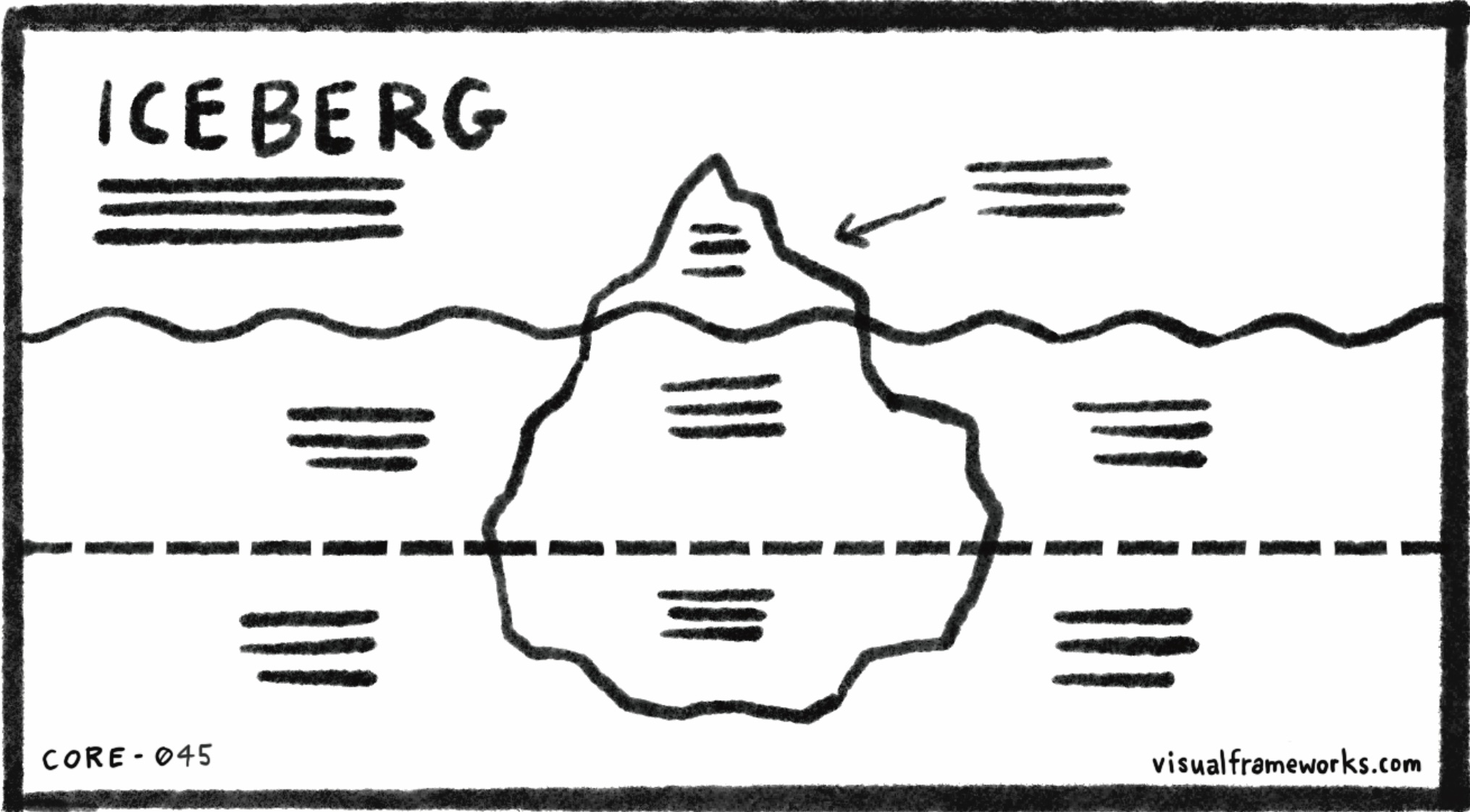An iceberg is a free-floating mountain of ice. Icebergs can be very hazardous to shipping, because the majority of an iceberg is invisible from the surface, below the water, unseen.
The tip of an iceberg is a small part of a much larger situation. The tip may be more visible and easily seen, but there’s much more under the surface. An iceberg metaphor is helpful for exploring things where most of the issues are unseen, invisible, and obscure, like root causes, emotional undercurrents, and unconscious thoughts, feelings or memories.
For example, psychologist and business theorist Edgar Schein used an iceberg metaphor as a model to describe organizational culture.
Artifacts are things that are visible above the surface, such as office jokes, dress code, and how the workplace is laid out and arranged.
Espoused values are the values the organization claims to have, promotes, and codifies in its public statements and rules for behavior.
Assumptions are deeply ingrained and taken for granted. They are unstated and often unconscious, and may or may not be congruent with the espoused values. Assumptions are the essence of the culture. Unseen and unacknowledged, and difficult for outsiders to see, they are the center of gravity that drives organizational priorities and behavior.
Do you suspect that you’re only seeing the tip of the iceberg? What might be underneath? What unseen and invisible forces might be creating the effect you see on the surface?
See also: Pyramid, Prism, Layer cake, Root causes, Org chart.
CORE-045
